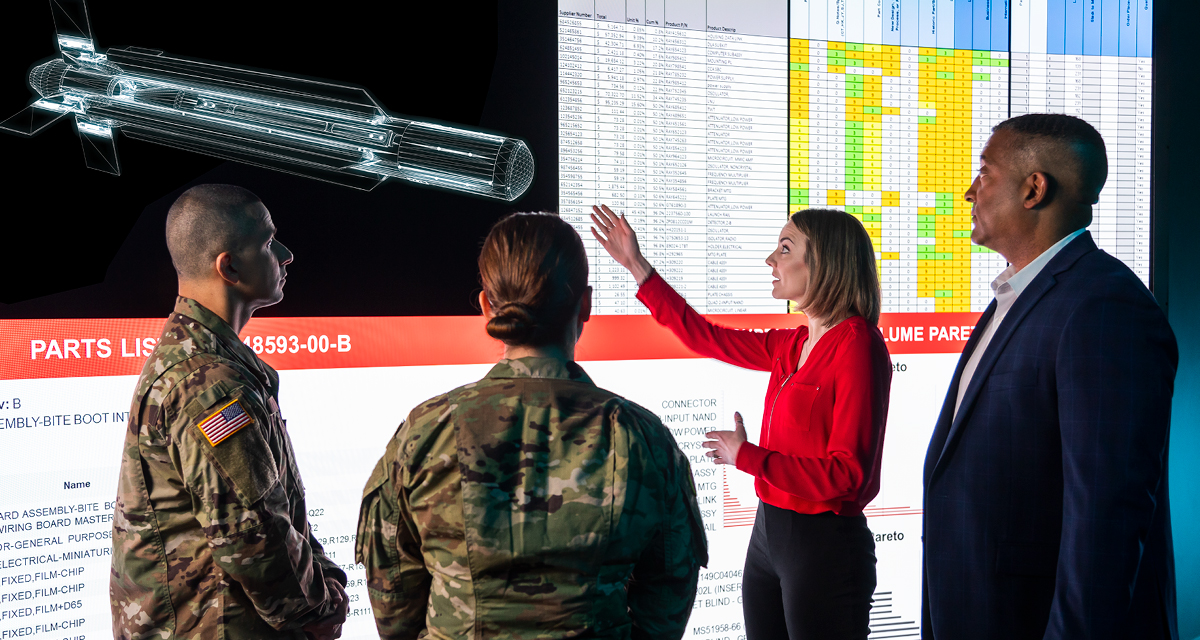
When a ballistic missile is launched, its trajectory is very clear. Experts have spent decades learning the launch sites and flight paths of various threats so, once a threat is launched, they usually know where it will land and what will happen when it does.
But a newer and much more unpredictable threat has taken to the skies: unmanned aircraft systems (UAS), more commonly called drones. They’re maneuverable, they come in many types, and they can launch from anywhere. And, they have the U.S. Department of Defense seeking quickly deployable defenses.
Tailoring the response
There are five UAS categories, based on their ceiling, speed and size. Each group poses unique threats that require tailored responses. So, in 2020, the Defense Department set up a Pentagon team led by Army Maj. Gen. Sean Gainey to assess all classes of drones and examine the threats they pose to military bases and other critical infrastructure.
The dynamic nature of the UAS threat requires an adaptable and enduring response. “The proliferation of unmanned aircraft systems threatens civilian and military targets – including but not limited to critical infrastructure, convoys, personnel, government facilities, forward operating bases and public events,” said Tom Laliberty, vice president of Land Warfare & Air Defense at Raytheon Missiles & Defense, a Raytheon Technologies business.
In an effort to better understand what response should be deployed, Raytheon Technologies uses advanced modeling and simulation tools. These technologies provide a rapidly reconfigurable simulated battlefield where the designer can quantify the scope and scale of the problem – and experiment with solutions.
“This is a threat that is unlike traditional threats air defenders face. It’s readily available. It can be weaponized, and UAS technology advances quickly. On top of this, it’s a highly unpredictable threat. The UAS does not follow a single flight path,” Laliberty explained. “To account for that, we use advanced algorithms to model a variety of scenarios that could play out—ranging from the kind of environment to the type of drone or attack.”
Modeling, simulation and detection
The first step to simulating a drone attack starts with modeling what type of sensor will detect it first. Raytheon Missiles & Defense begins with what it calls the outer layers of air defense, using deployed air defense radars, such as its and to detect a threat long before it approaches a military base or other target. Depending on the threat, a mid-range effector deploys to engage.
In addition, Raytheon Missiles & Defense has also added a new layer of detection in the defense against UAS – a highly precise radar called . It operates in the Ku-band of the radio frequency spectrum, which allows for higher-resolution imaging – an important part of tracking smaller flying objects. KuRFS, when paired with an array of counter-effects, can quickly pick up the track of airborne threats launched at medium- to close- ranges. And, with extreme precision, KuRFS can discriminate what the threat is – in a process called positive identification.
“The ability to clearly see and classify the target is critical,” said Laliberty. “It not only gives soldiers enough time to take cover and respond, but it drastically reduces the number of false alarms. Good vision is everything to them.”
Capabilities for layered defense
In 2018, the U.S. Army deployed the KuRFS radar with the company’s , a highly precise system designed to launch and take out drones. But understanding that unmanned aircraft systems are a threat to many facilities, operations and events, and that they attack in various ways, Raytheon Technologies has also developed directed energy solutions as counter-effects.
Raytheon Technologies’ (HEL) and high-power microwaves use non-kinetic energy to quickly, affordably and repeatedly eliminate UAS threats, particularly class 1 and 2 drones. Directed-energy systems have several key advantages: They’re affordable and have infinite magazine depth and, with an adequate power source, they have the ability to fire again and again.
“Directed energy brings an incredibly important capability to the table. It’s highly precise, minimally disruptive and affordable—critical factors in a counter-UAS scenario,” Laliberty said. “And we recognize that one solution is not enough. A true counter-UAS system needs to be adaptable to various threat and use scenarios but, beyond that, it needs to be integrated and designed in layers for a strong defense.”
Taking it to the battlefield
These technologies moved quickly through modeling and simulation to the battlefront. The U.S. Air Force has three HEL systems in undisclosed overseas locations for training and operational assessment. They have accumulated more than 10,000 operational hours.
Raytheon Missiles & Defense has delivered the prototype high-power microwave system to the U.S. Air Force under a demonstration contract. Meanwhile, the U.S. Army recently clocked in 1.5 million operational hours for the radar. Combined with air defense solutions, such as , and – all deployed today – the Department of Defense will have an arsenal of proven defenses ready for unmanned airborne threats.
“We take the feedback we are receiving from soldiers on the ground and the knowledge we have about how the UAS threat is evolving to continually look for ways to upgrade these systems to stay ahead of the threat,” Laliberty said. “Our simulation capabilities and open software architectures have changed the game in terms of our ability to deploy solutions quickly.”
No comments:
Post a Comment